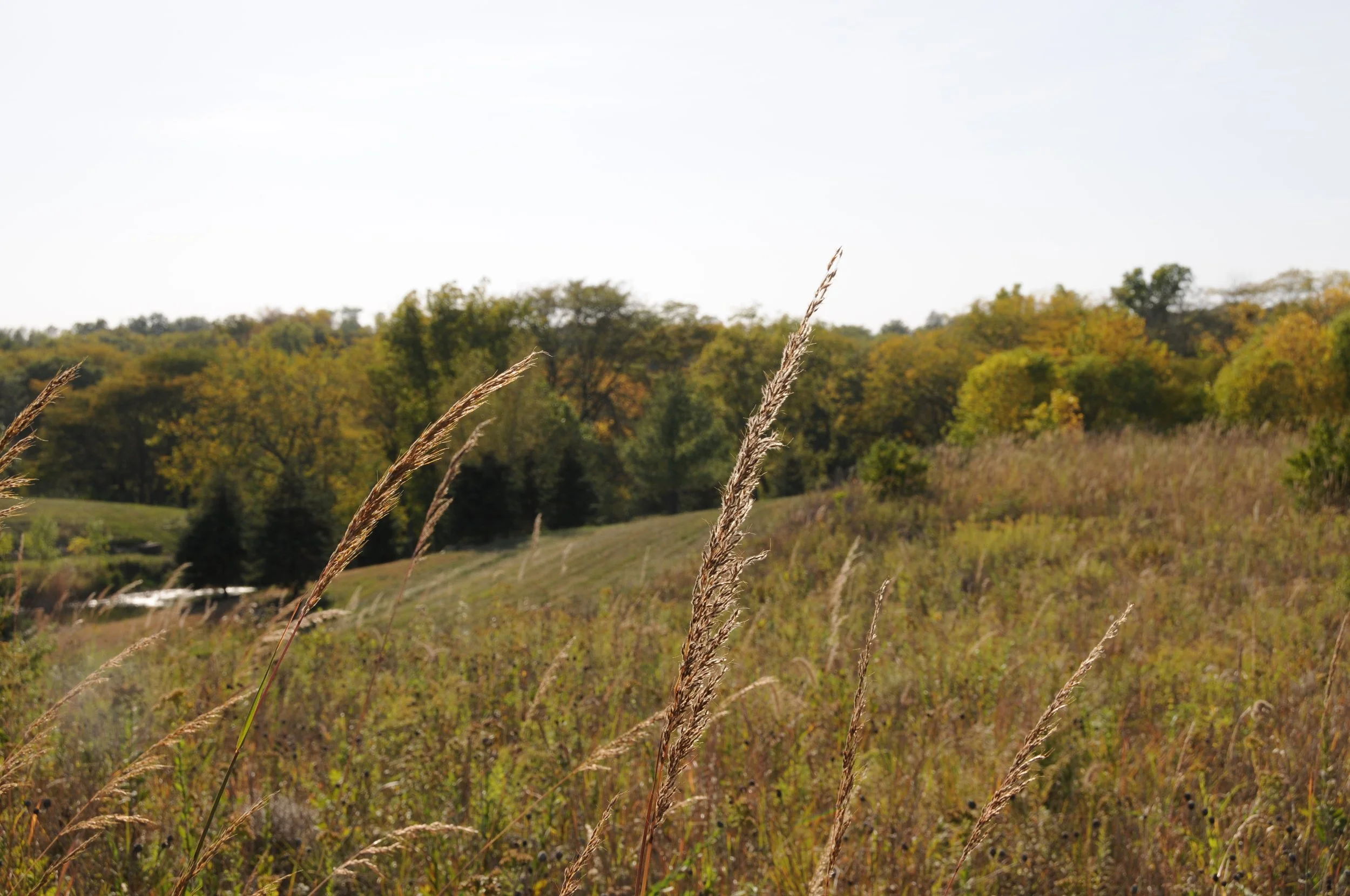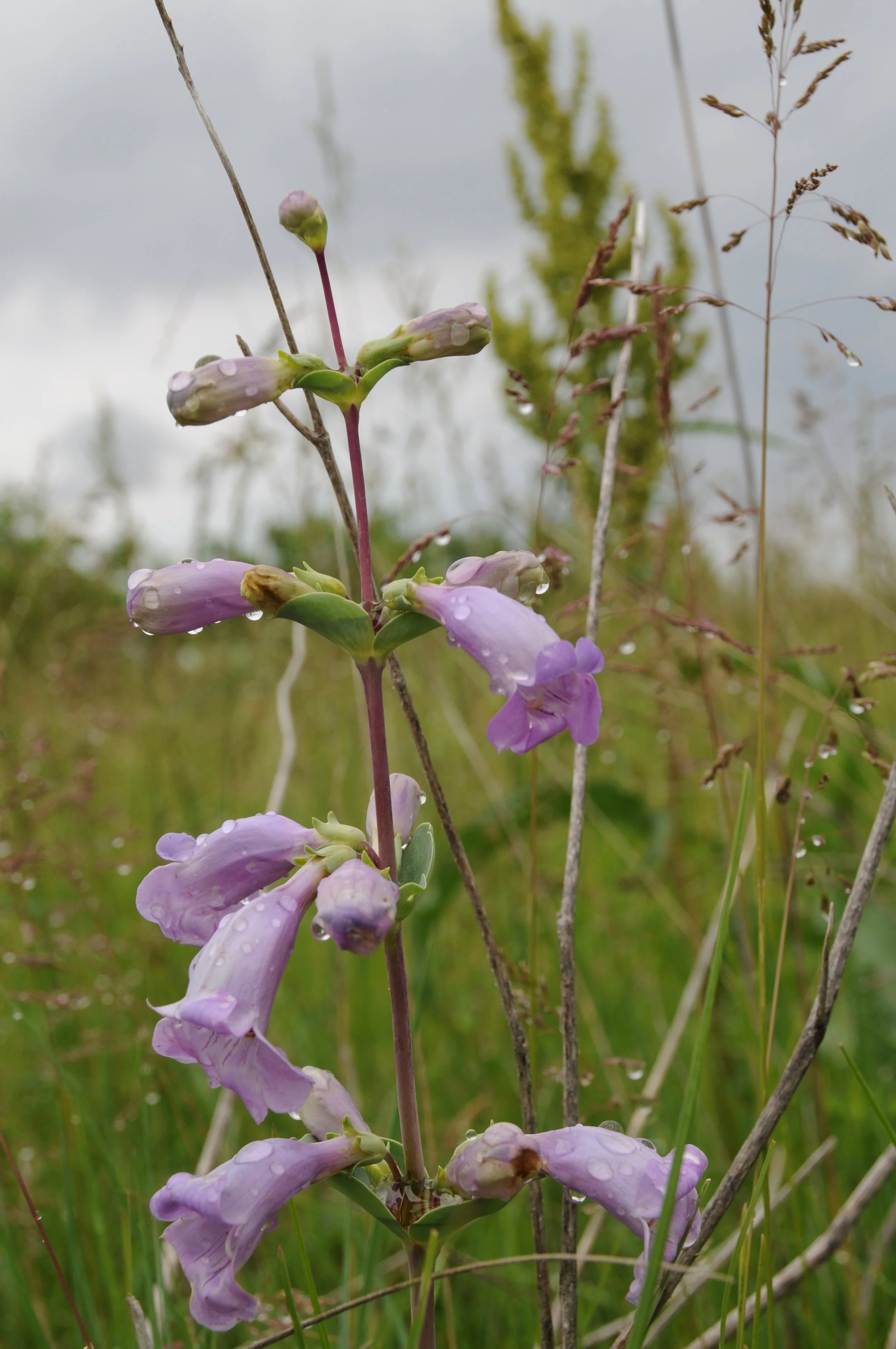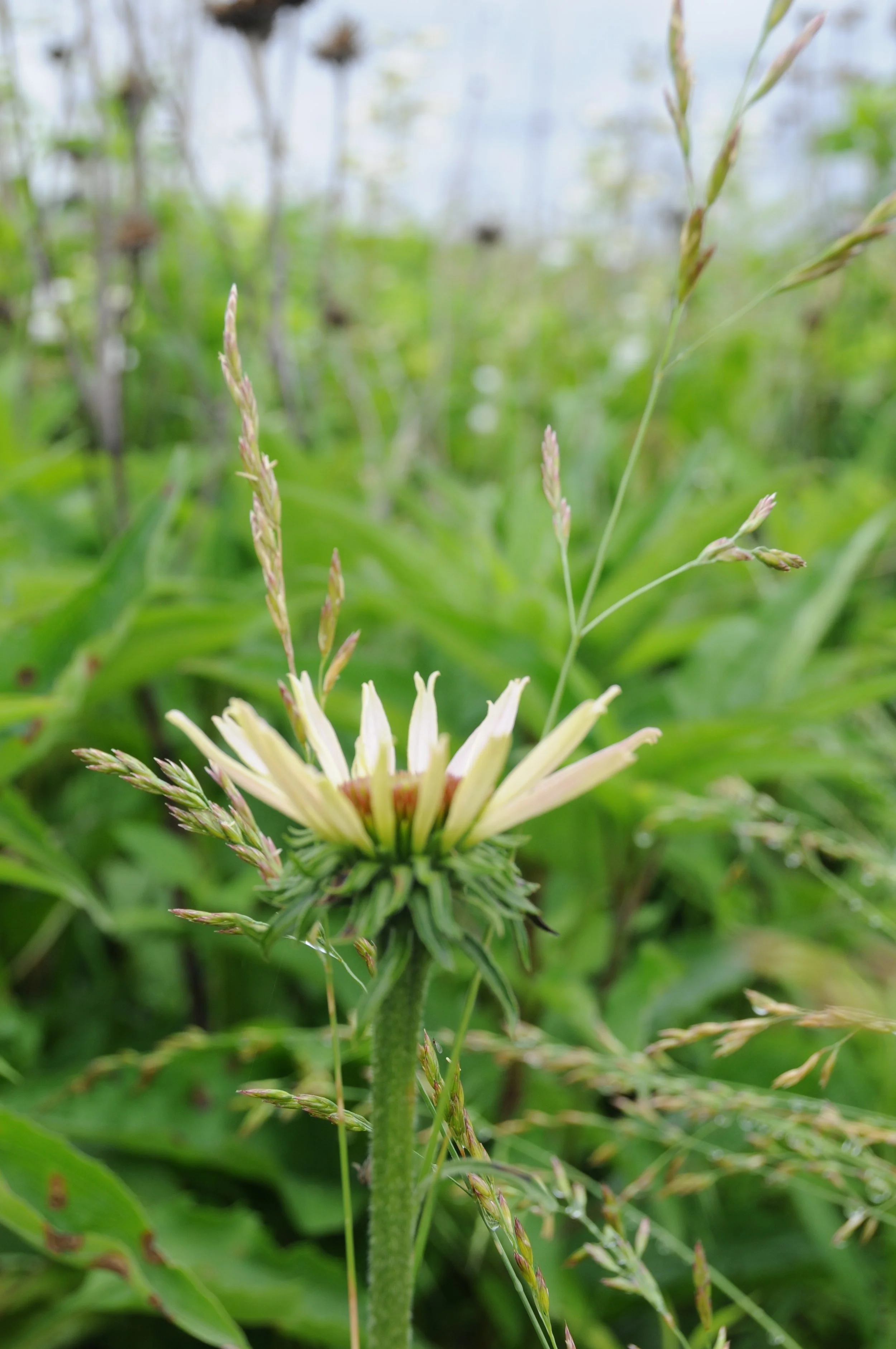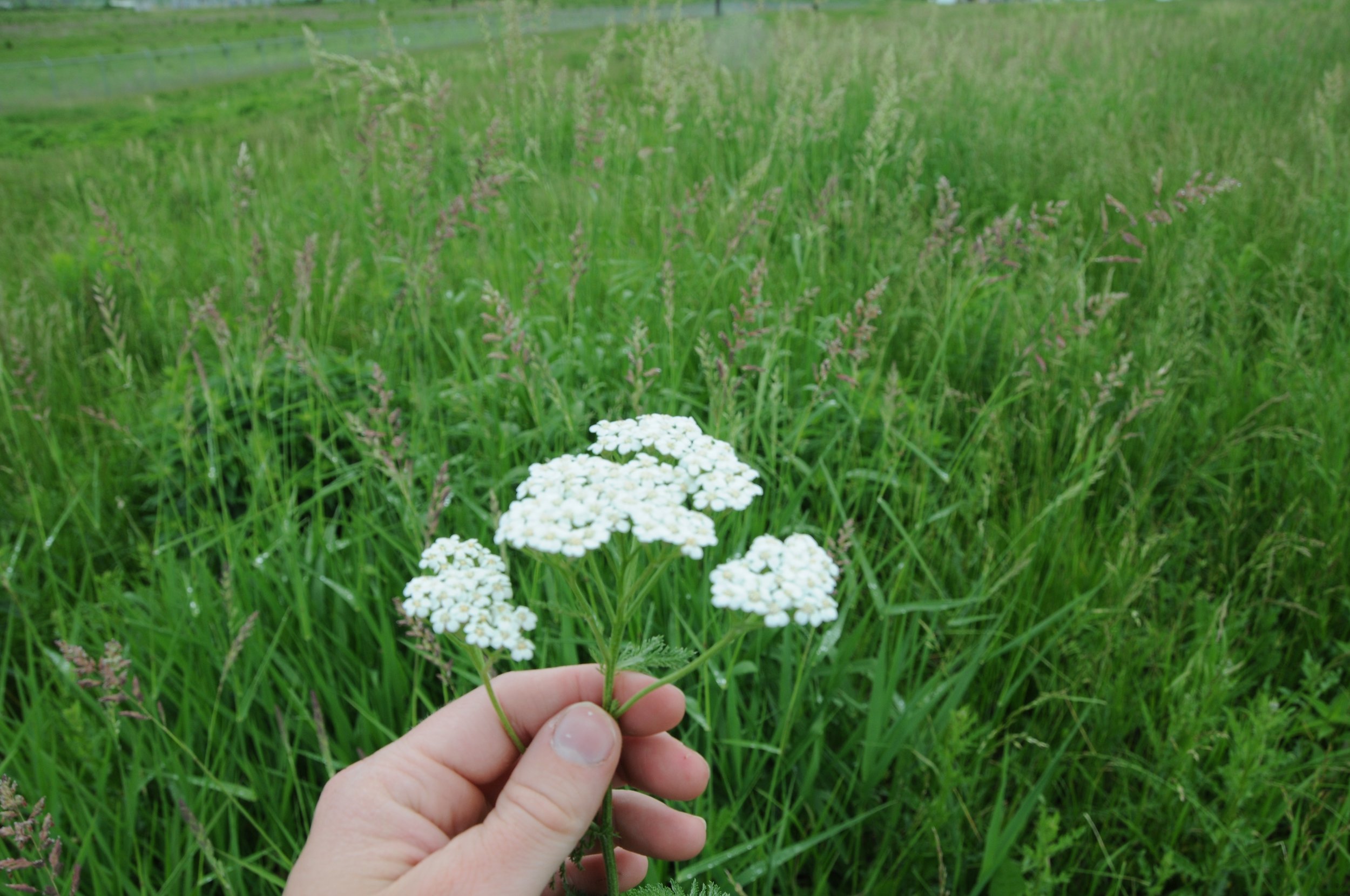Starting Your DIY Backyard Prairie: Fall Tips
Fall is a great time to finally start the backyard prairie patch you’ve been dreaming about. Here are some of my quick tips for starting a backyard prairie project on your own!
Tip 1: Start small
If this is your first time seeding any kind of native Iowa plant, start small. 5’x5’, 10’x10’, 20’x20’ at most— but don’t go any bigger. You can always add on in future years.
The simple explanation is: there are no guarantees so starts small so its easy to course correct as you go.
The long explanation is: there is so much that goes into soil biology, and you are relying on that soil growing the plants you are seeding!
Without having an idea of what is really going on in the soil, its hard to know how likely the soil is to want to grow these prairie plants. Is this soil that has been growing nothing but weeds for years? Is it extremely compressed soil that had a skid loader driving over it a million times? Is it soil that was growing lawn and chemically treated regularly?
Each of these can create different soil biology. The great news is, the soil changes! Compost, cover crops can be your best friends in increasing the health of the soil to be ready to start your project. Some prairie plants can be notoriously hard to get growing, so that is why you want to start small. Gain momentum as you go. If you get a beautiful stand of native plants, and are able to carefully prune weeds out in your 5’x5’ area— go ahead and add on and follow the same process! I’ll continue to explain more about this in the next tip:
Tip 2: Select the right seed
Start with seed that wants to grow. You can absolutely add in the ever-so-beautiful Queen of the Prairie, and gorgeous Obedient plant to your mix, but you are unlikely to see those for the first few years. Let’s choose plants that are typically more eager to get growing to make up the bulk of your list. These plants are also favored by pollinators, like Echinacea pallida (Pale Purple Coneflower), so the pollinators can benefit while you wait for the sleeping beauty’s of the prairie to finally grow.
Source your seed locally. You want ecotyped seed as close to you as possible, with a high PLS (Pure Live Seed) number. Do your research! If you can find a small, local seed vendor harvesting and selling seed from a remnant prairie— you’ve hit the jackpot! Do not buy seed that isn’t clearly sourced and harvested in Iowa, or you may not get the growth results you want! Most seed vendors will answer if you ask where they source their seed. You can also email me with your county and I will try to direct you with the nearest vendor. I have clients that also love to donate seed when they know someone nearby wants to start a prairie, too!
Tip 3: Consider a Cover Crop
Cover crops are an incredible tool when you know your soil is going to fight weeds. Cover crops grow fast, and eagerly, and they do a terrific job of grabbing excess nutrients in the soil, preventing them from leaching into groundwater or becoming runoff.
Winter rye works great as a cover crop seeded in the fall. I have also used oats. Deer love oats, so if you want to attract deer to your area, oats would be the way to go!
Tip 4: Don’t Be Afraid to Sprinkle More Seed!
When I do small backyard prairie projects, I always sprinkling a small mix of seed every time I come by in the spring and fall. This might mean four, five, or six additional sprinkles after the first seeding. If its spring, I do wildflowers that don’t require seed stratification. If its fall, I do seed types that want those 3 months of cold to snuggle up and freeze.
Some of my current spring seed favorites: asters (can’t go wrong here!), wild senna, monardas, culvers root, purple prairie clover
Fall seed your options are limitless because the majority of native plants will want that stratification!
Filling up that soil bank with lots of options will help get things growing!






